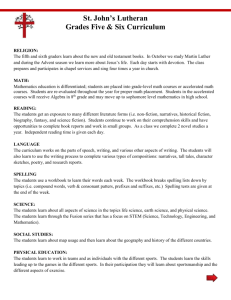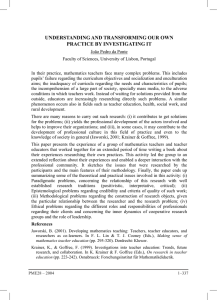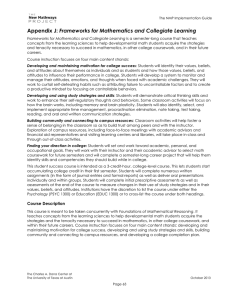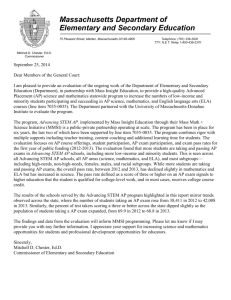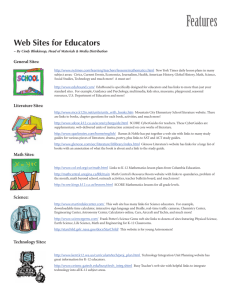Major Issues in Math Education - FIMC-VI
advertisement
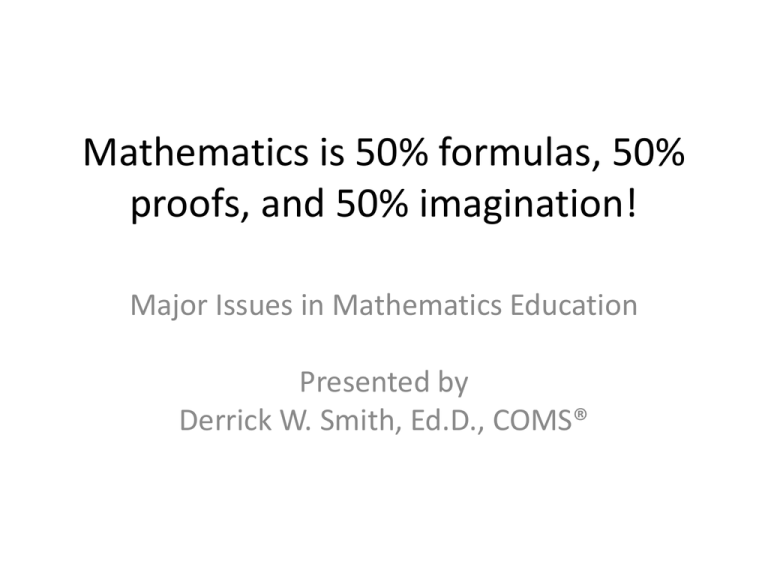
Mathematics is 50% formulas, 50% proofs, and 50% imagination! Major Issues in Mathematics Education Presented by Derrick W. Smith, Ed.D., COMS® Draw a Mathematician Draw a Math Teacher Fact or Fiction? 1. 2. 3. 4. 5. 6. Men are better at mathematics than women. Math requires logic, not intuition. You must always know how you got your answer. Math is not creative. There is a best way to do a math problem. It's always important to get the answer exactly right. 7. It's bad to count on your fingers. 8. Mathematicians do problems quickly, in their heads. 9. Math requires a good memory. 10. Math is done by working intensely until the problem is solved. 11. Some people have a "math mind" and others don't. 12. There is a magic key to doing math. Math Education • Math educators are "different". – Different personalities – Different backgrounds – Unique content – Specific pedagogy – Different lesson plan structuring – Multiple standards – Single professional organization – Multiplicity of stressors Stressors • • • • • • • Students LOATE mathematics! Why? Large class sizes TIMSS and NAEP studies Push for application-based mathematics Push for inquiry-based learning (NSF) Push of use of technology AYP! And they HAVE to teach "our" kids... • • • • IDEA mandate LRE Highly qualified teacher Most special educators are not considered highly qualified in the math content area. Research • Do Educators Feel Adequately Prepared to Teach STEM subjects to Students with VI? • How do STEM teachers REALLY feel about students with disabilities? • How do STEM teachers REALLY feel about students with VI? Example of How Math Teachers React to Our Students • Answer these questions: – What attitudes are demonstrated by the math teacher towards students with VI? – How did the TVI “handle” the situation? – How could the TVI have made the situation better? Math Education Research 1. The extent of the students’ opportunity to learn math content bears direction and decisively on student math achievement. 2. Focusing instruction on the meaningful development of important mathematical ideas increases the level of student learning. 3. Students can learn both concepts and skills by solving problems. 4. Giving students both an opportunity to discover and invent new knowledge and an opportunity to practice what they have learned improves student achievement. 5. Teaching that incorporates students’ intuitive methods can increase student learning, especially when combined with opportunities for students interaction and discussion. Math Education Research, cont. 6. Using small groups of students to work on activities, problems, and assignments can increase student math achievement. 7. Whole-class discussion following individual and group work improves student achievement. 8. Teaching math with a focus on number sense encourages students to become problem solvers in a wide variety of situations and to view math as a discipline in which thinking is important. 9. Long-term use of concrete materials is positively related to increases in student math achievement and improved attitudes towards math. 10. Using calculators in the learning of math can result in increased achievement and improved student attitudes.

